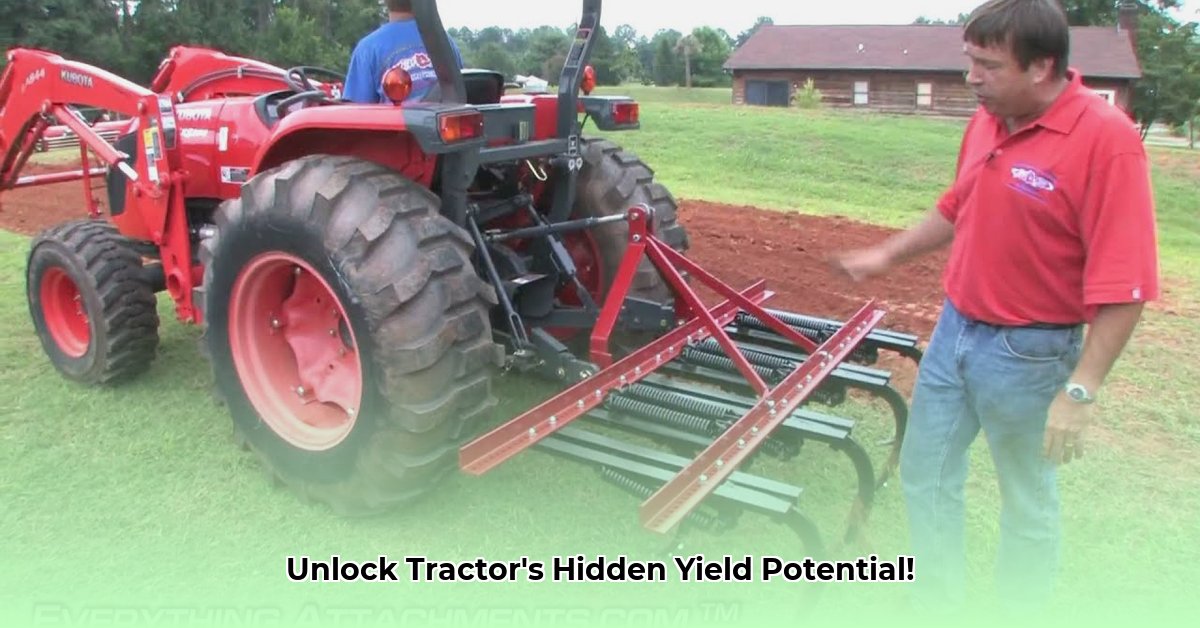
Cultivator Attachments: Your Guide to Better Harvests
Healthy soil is the foundation of successful agriculture. A cultivator attachment is your key to preparing that soil effectively, boosting yields, and promoting sustainable farming practices. This guide helps you select the ideal cultivator for your specific needs, whether you manage a small garden or a large-scale operation. For more information on tillers, check out this helpful resource: 3-point tillers.
Understanding Your Soil and Crops
Before selecting a cultivator, understand your soil type. Is it heavy clay, light sandy, or loamy? Each type demands a different approach. Clay soils, dense and compact, need powerful cultivators to break up the structure. Sandy soils, conversely, are delicate and require gentler tools. Loamy soil offers more flexibility. This initial assessment is critical. What's the dominant soil type on your farm, and how does that influence your cultivator choice?
Crop selection greatly impacts soil preparation. Different crops have varying needs concerning tillage depth and intensity. Deep-rooted crops, such as potatoes, require deeper tillage than shallow-rooted ones. Choosing the right cultivator attachment ensures optimal growth. How do the specific soil and crop needs of your farm direct the selection of your cultivator?
Types of Cultivator Attachments
Several cultivator attachments cater to specific soil conditions and farming operations. We'll explore the most common:
Spring Tines: These versatile cultivators are ideal for lighter tillage, seedbed preparation, and weed control in less-compacted soils. They're gentler on the soil structure.
Shanks: These heavy-duty attachments excel in breaking up denser, compacted soils. They're suited for deep tillage in tough conditions but can be more aggressive.
Discs: Discs cut through the soil, offering good mixing and weed control. They are versatile but might lack the precision of other options.
Rotary Cultivators: These use rotating blades for intensive soil preparation, ideal for weed control and seedbed preparation. They're efficient but tend to consume more fuel.
Understanding the differences between these types is key to making the right decision. A diagram comparing the tillage action of each type would be beneficial here. Which type of cultivator attachment best suits your farming practices and specific soil conditions?
Choosing the Right Cultivator: Key Considerations
Selecting the right cultivator involves several factors beyond soil type:
Tractor Power: Match the cultivator's demands to your tractor's horsepower. Overloading your tractor leads to inefficiency and potential damage.
Budget: High-quality cultivators exist at various price points. Consider your budget and the scale of your operation. Affordable options exist for small-scale farmers.
Scale of Operation: A small garden demands a vastly different cultivator than a large commercial farm. Size directly influences the choice of equipment.
Sustainability: Prioritize durability to minimize waste. Opt for cultivators made with recycled materials, whenever possible. Consider attachments with fuel-efficient designs.
Sustainable Farming Practices: Minimizing Your Environmental Impact
Sustainable farming is paramount. A durable cultivator minimizes waste, reduces your carbon footprint, and lowers operating costs. Prioritize fuel efficiency when comparing different models. How can you incorporate sustainability into your cultivator choices and reduce your overall environmental impact?
Maintenance and Safety
Regular maintenance is vital for prolonging the lifespan of your cultivator and preventing accidents. Inspect for wear and tear after every use, lubricate moving parts regularly, and promptly replace worn components. Proper maintenance translates to increased efficiency, safety and reduced costs. Always adhere to the manufacturer's safety guidelines. What's your maintenance plan for your chosen cultivator attachment to ensure long-term performance and worker safety?
Case Study: A Farmer's Success
"Using a spring tine cultivator on my loamy soil has significantly improved my yields and reduced soil compaction," says John Miller, a small-scale farmer in Iowa. "Healthier plants and a more successful harvest have proven the value of selecting the right tool." This illustrates the tangible benefits of choosing the right cultivator for your specific context.
Conclusion: Optimizing Soil Preparation for Greater Yields
The right cultivator attachment significantly impacts soil health, crop yields, and labor efficiency. By carefully considering your soil type, crop needs, budget, and the scale of your operation, you can optimize soil preparation and harvest more abundant, sustainable crops. Investing in the right tool is an investment in the future of your farm.